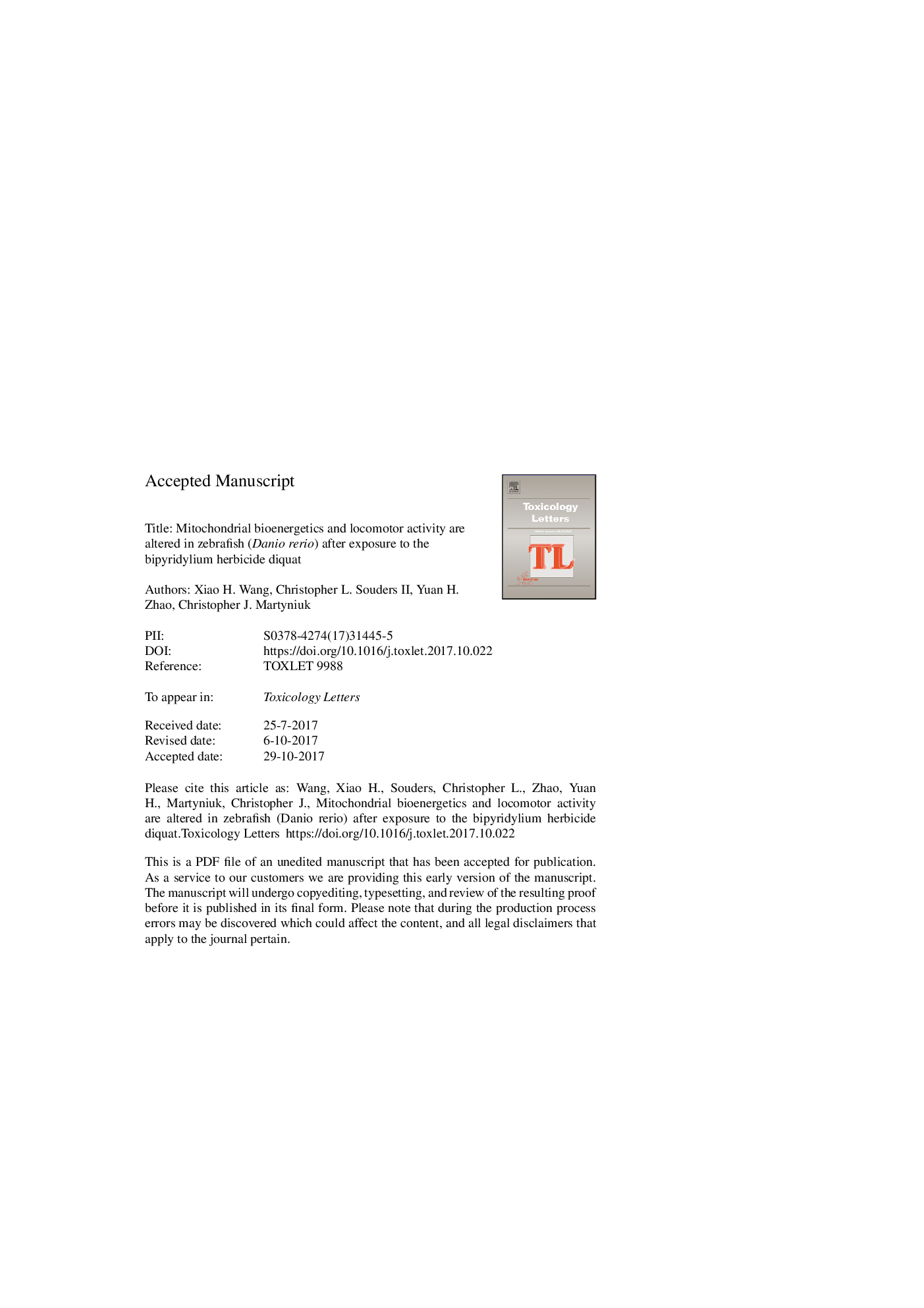| کد مقاله | کد نشریه | سال انتشار | مقاله انگلیسی | نسخه تمام متن |
|---|---|---|---|---|
| 8553495 | 1562589 | 2018 | 27 صفحه PDF | دانلود رایگان |
عنوان انگلیسی مقاله ISI
Mitochondrial bioenergetics and locomotor activity are altered in zebrafish (Danio rerio) after exposure to the bipyridylium herbicide diquat
دانلود مقاله + سفارش ترجمه
دانلود مقاله ISI انگلیسی
رایگان برای ایرانیان
کلمات کلیدی
موضوعات مرتبط
علوم زیستی و بیوفناوری
علوم محیط زیست
بهداشت، سم شناسی و جهش زایی
پیش نمایش صفحه اول مقاله

چکیده انگلیسی
Diquat is a non-selective bipyridylium herbicide which has replaced its sister compound paraquat, as paraquat is associated to an increased risk for Parkinson's disease. However, the propensity of diquat to propagate reactive oxygen species ensures that diquat remains an exposure risk in non-target organisms. In this study, zebrafish (Danio rerio) embryos were exposed to diquat (1, 10, 100 μM) beginning at â¼6 h post fertilization for up to 7 days to learn more about the mechanisms underlying diquat toxicity during vertebrate development. Zebrafish embryos exposed to diquat for 96 h did not show any significant mortality nor deformity compared to controls. Moreover, there was no difference in the timing of hatch, an indicator of stress, for fish exposed to diquat. To determine whether changes in mitochondrial bioenergetics occurred in early development as a response to diquat exposure, oxygen consumption rate was measured in whole embryos. Basal respiration and ATP production were decreased following a 24 h diquat exposure at 100 μM, suggesting that diquat negatively affects oxidative phosphorylation. We also assessed locomotor behavior as a sensitive endpoint for impaired activity and neurotoxicity. Seven day old (7 dpf) zebrafish treated with diquat at the highest doses tested (10-100 μM) showed an increase (hyper-activity) in total distance travelled, velocity, movement cumulative duration, and overall activity compared to unexposed fish. Lastly, in 7d fish, we measured transcripts related to redox balance and apoptosis as diquat has been reported to induce oxidative stress and can affect mitochondrial bioenergetics. Larvae exposed to 10 μM diquat showed higher transcript levels of catalase compared to control fish, implying that reactive oxygen species are produced following diquat exposure. Transcript levels of sod1, sod2, bcl2, bax and caspase 3 however did not vary in abundance among treatments with diquat. This study improves mechanistic understanding of diquat in fish at early stages of development and presents evidence that diquat disrupts mitochondrial bioenergetics and behavior.
ناشر
Database: Elsevier - ScienceDirect (ساینس دایرکت)
Journal: Toxicology Letters - Volume 283, February 2018, Pages 13-20
Journal: Toxicology Letters - Volume 283, February 2018, Pages 13-20
نویسندگان
Xiao H. Wang, Christopher L. II, Yuan H. Zhao, Christopher J. Martyniuk,